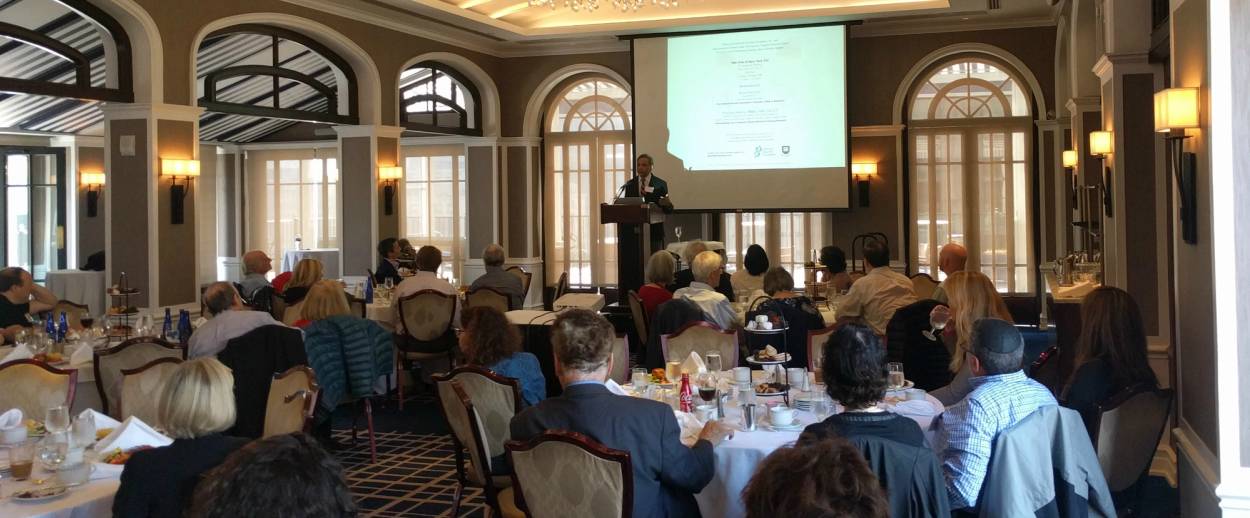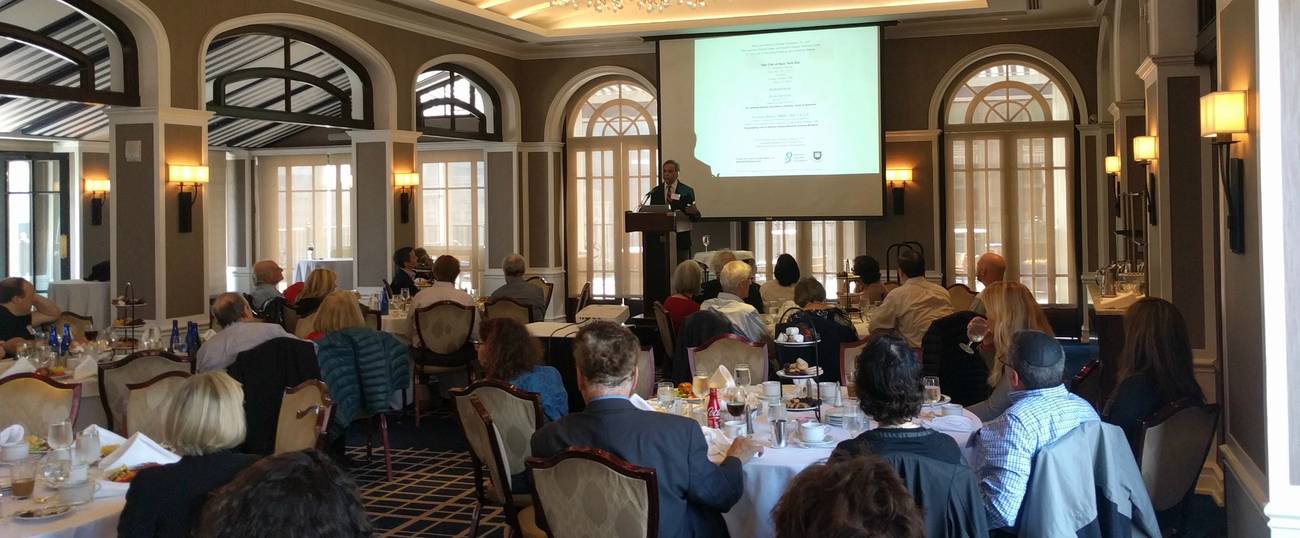New York Conference Raises Awareness for Gaucher Disease
According to the National Gaucher Foundation, one out of every 10 Ashkenazi Jews are carriers for the rare genetic disorder




In 1979, a year after graduating from Quinnipiac University, and newly married, Suzanne Krupskas began to suffer from what she describes as incredible pain. “We were playing tennis,” she recalled, when she felt what was like “drills going through my legs and hips—I fell down.”
Krupskas, a native New Yorker, spent the next two years seeing different doctors and specialists who could not accurately diagnose. Finally, a couple years later, she learned she had Gaucher Disease (pronounced Go-SHAY), a rare genetic disorder that causes fat to accumulate in cells and organs like the liver, spleen, and brain due to an enzyme deficiency. For individuals who make it past infancy with the disease, the disease can cause severe bone pain, an enlarged spleen and liver, and anemia, among other symptoms.
According to the National Gaucher Foundation, one in 40,000 people in the U.S. are diagnosed with Gaucher annually, but the percentage is much higher for Jews of Eastern and Central European descent: one in 450 Ashkenazim are diagnosed. One in 10 Ashkenazi Jews are carriers (i.e. someone who can pass on the illness to their children if their spouse is also a carrier). Krupskas is of Polish, Austrian, and French descent.
Krupskas traveled to the Yale Club this past Sunday to partake in the fourth annual symposium hosted by the National Gaucher Foundation, Inc. and the Yale Lysosomal Disease Center and Gaucher Disease Treatment Center. There, the two organizations presented the latest Gaucher research and community innovations and took the opportunity to bring the Gaucher community together in the U.S.’s most Jewish city. While much of the conference’s information is available online and there are discussion forums for the approximately 7,000 people who suffer from the disease nationally, “these meetings,” Krupskas said, “are the only true way to interact well. You lose something on the Internet.”
Over a catered kosher lunch of teriyaki salmon, vegetables, and an assortment of desserts, a group of around 80 individuals listened eagerly and actively engaged with Brian Berman, the President and CEO of National Gaucher Foundation, and Dr. Pramod Kumar Mistry, the leading expert of Gaucher Disease, each addressed topics that no doubt hit close to home: Many of those in the audience were either living with the disease or have a family member who suffers from it. “My brother has Gaucher,” said Avraham, an ultra-Orthodox Jew from Lakewood, who asked Tablet not to use his last name because of stigmas about genetic diseases prevalent in the ultra-Orthodox community. The audience listened to Berman recount his personal story of being the first person ever successfully treated for Gaucher Disease. He began treatment when he was 4 years old. Now 36, he’s married with five children of his own. “They help me with my injections,” he said of his children. “I wouldn’t be able to do it without them.”
Berman, who took the helm of the National Gaucher Foundation earlier this year, is easing into his new position. He explained that he had resistance to becoming an activist for this community: “I felt the disease stole my childhood.” But he sees the importance of using his skills and experience to help others and the community.
Colorful glossy brochures provided information on everything anyone could want to know as an introduction to the disease. The most basic pamphlet explained that there are three forms of Gaucher Disease: types 1, 2, and 3. Type 1 is currently the only form that is treatable and is the most prevalent form of Gaucher Disease found in Ashkenazi Jews. Though Type 1 Gaucher Disease has been treatable since 1991, there is no cure and those who suffer from the disease are constantly on meds and often in pain. Babies born with Types 2 or 3 die in infancy, due to severe early onset brain damage. There is still work to be done, Berman explained, in the fields of “education and awareness.” This venture will be carried out mostly on social media, he explained, with videos and a new campaign called #SpitHappens, which is set to launch November 9. He is also working on a new initiative to be able to provide psychological support for families with children with Gaucher Disease.
A few patients mentioned that some of their symptoms have not been identified as being in line with the current research on Gaucher. For example, many attendees noted that they have severe joint pains as a symptom of their disease, though it is not yet accepted as having scientific ties to the disease. Moreover, some people, like Krupskas, noted that they were initially misdiagnosed as having Leukemia, because general medical professionals have not traditionally been trained to look for Gaucher.
This is where the work needs to be done, to fill in these gaps and make sure suffering is alleviated. For those with the disease, Krupskas is unequivocal: “Treatment is imperative. I don’t want anyone to go what I went through with 8 hip replacements [because my bones were so weak.]” For those would-be parents who are considering having children, Krupskas has another piece of valuable advice: “Don’t put on blinders,” she said. “Educate yourself and get [genetically] tested,” which is free through the end of the year.
Rachel Delia Benaim is a freelance religion reporter. Her work has appeared in The Washington Post, The Daily Beast, and The Diplomat, among others. Follow her on Twitter @rdbenaim.